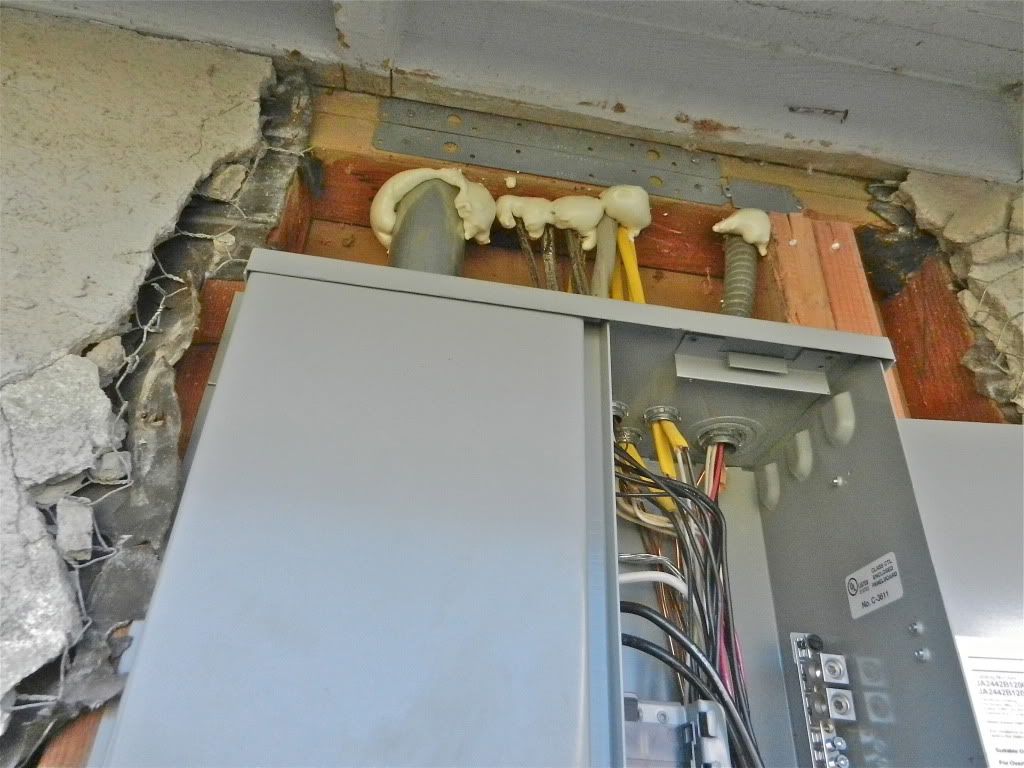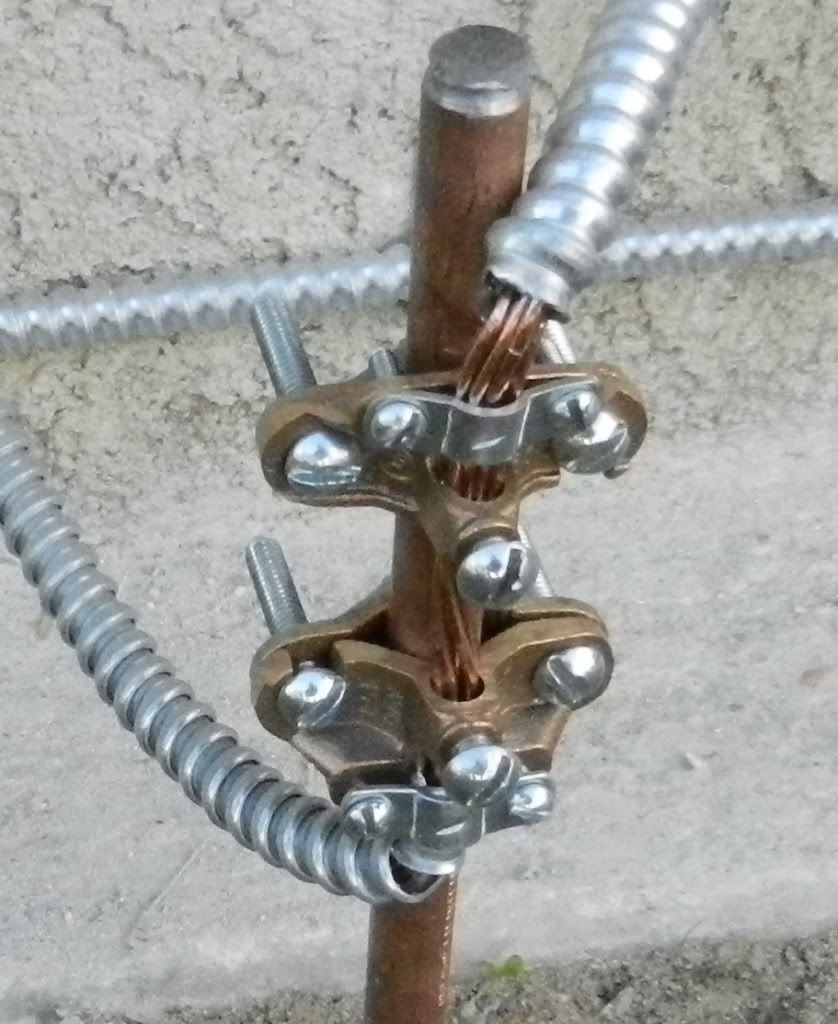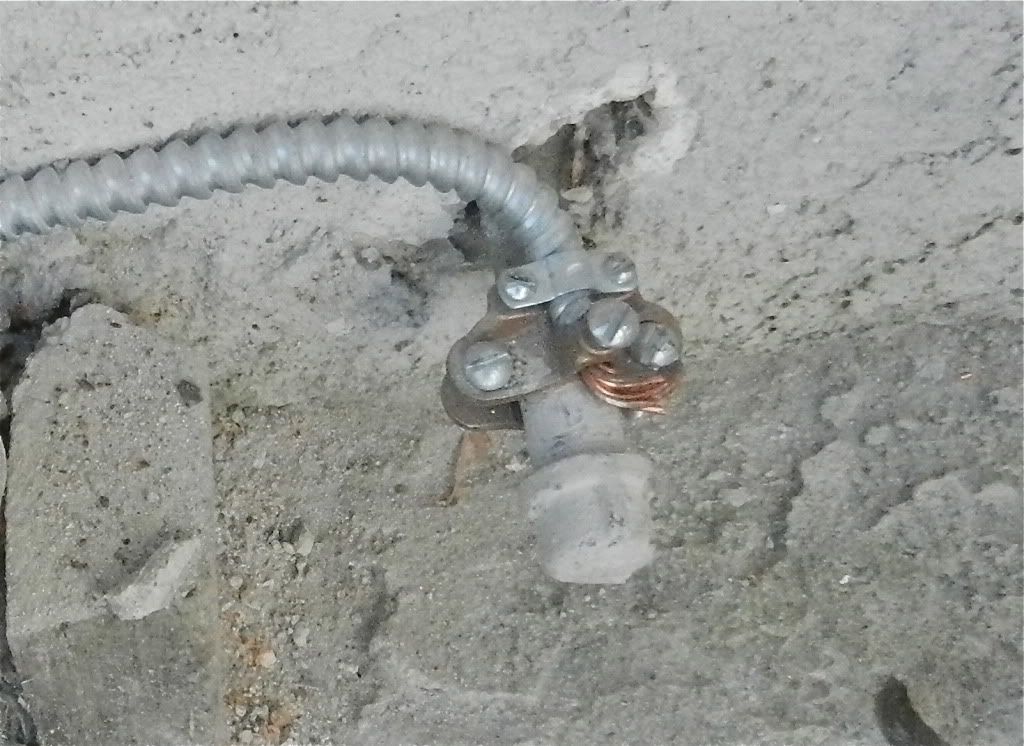The work is sorta strange in that the mechanic was good but the thinker behind it all needs direction.
I almost always have to write a correction for a strap at the over-bored top plate and these guys almost thought of it on their own.
Focus instead on the foam at the top plate penetrations. That's what caught my attention.
They knew it would be required but didn't know what to use. That's where the strange came in. How the Hell would they know that and miss the paint under the clamp.
The work garnered many corrections. I got the impression that this was a first time effort and the corrections are cheap education.
Then the lady that lives there tells me that her husband and several men from his workplace did the work. The husband is a "plumbing engineer" and at least one of his friends is an electrical engineer because where he works, "there is every kind of engineer." Hard to know how this will play out, some engineers take the news better than others.



I almost always have to write a correction for a strap at the over-bored top plate and these guys almost thought of it on their own.
Focus instead on the foam at the top plate penetrations. That's what caught my attention.
They knew it would be required but didn't know what to use. That's where the strange came in. How the Hell would they know that and miss the paint under the clamp.
The work garnered many corrections. I got the impression that this was a first time effort and the corrections are cheap education.
Then the lady that lives there tells me that her husband and several men from his workplace did the work. The husband is a "plumbing engineer" and at least one of his friends is an electrical engineer because where he works, "there is every kind of engineer." Hard to know how this will play out, some engineers take the news better than others.



Last edited by a moderator:
